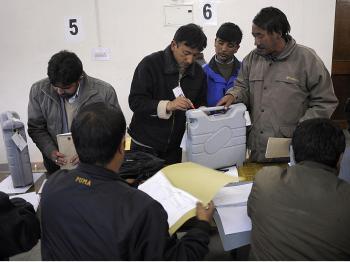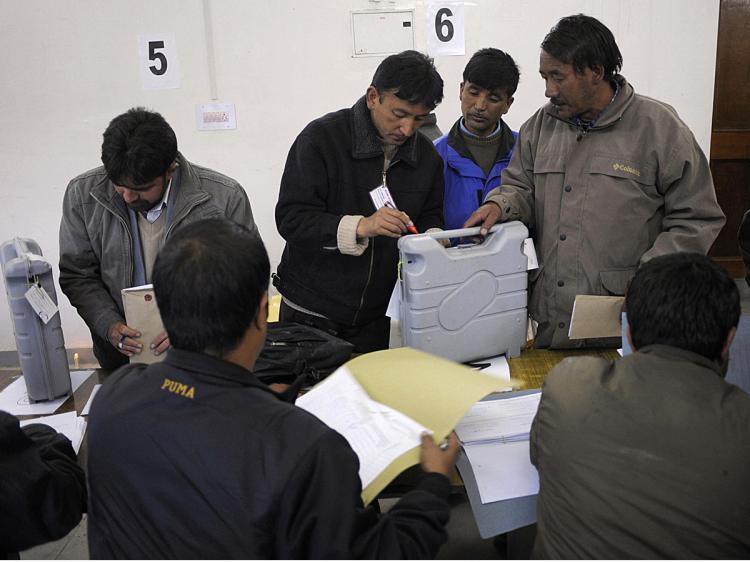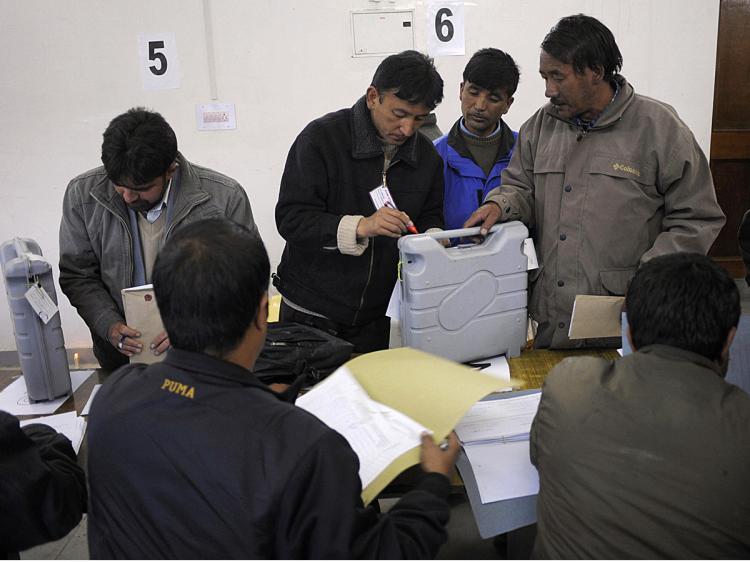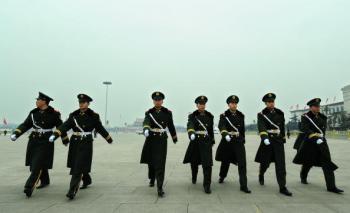The nationwide elections are the first since the May 2004 elections which gave the Congress and its allies a surprise sweeping victory over the then-ruling Bhartiya Janata Party (BJP), which had been projected to win.
India’s election is a multi-party poll. The usual lineup features two strong national parties—the Congress and the BJP—allying with several regional parties to produce a loosely bound majority coalition running the central government.
Neither national party has a clear and strong leader, and central and consistent themes have been scarce during this election. The elections have instead been dominated by regional issues, and it is expected that the regional parties will carry more clout in whichever coalition is formed at center.
The election is expected to be dictated by a few swing states, particularly the South-Eastern state of Tamil Nadu, which holds the key to 39 of the 543-seat lower house of parliament. Tamil Nadu voted in the last round of the elections, and the voters in the Dravidian state have almost always given an overwhelming support to one of the two major parties—DMK and the AIADMK—in the election.
The final round of votes India, the world’s largest democracy, brings to an end a five-step, staggered election process that began on April 16.
Economy and Foreign Issues
The elections come after five years of relative political stability under a Congress-led alliance, though that stability was briefly rocked in July 2008 when the Communist Party coalition withdrew support from the Congress over the nuclear pact with the United States. The Congress-led coalition survived the vote of no-confidence by brokering a last-minute support deal with a regional party, the Samajwadi Party, allowing the nuclear pact to be signed with the U.S. administration in October 2008.
These elections come at a critical time for India. Its economy has slightly contracted, with slower growth expected than in the recent past, and it faces a major foreign policy meltdown with neighboring countries Pakistan, Sri Lanka and China.
India has not suffered as much from the global economic downturn—mostly because of conservative lending rules and strict policies by the Reserve Bank of India (RBI) which sets the tone for real estate loans. But while its internal real estate and lending market remains stable, India has nevertheless suffered from the global credit crunch as foreign investors have pulled back investment from the stock market, and foreign software and engineering companies have slowed down their investment due to the weak economy.
Meanwhile, neighbor Pakistan grapples with the Taliban and internal security issues, and Indian intelligence agencies and the army are worried that the Taliban already control vast areas of Pakistan.
Towards the South, the Sri Lankan government and the Tamil Tiger rebels have a critical face-off in what is described as the Tigers’ last stand. The Tigers are classified as a terrorist group by several countries, and while the Sri Lankan war has allowed the government to re-capture vast areas once ruled by the Tigers, it has also been a public relations disaster for the government. The Sri Lankan government has been accused of the assassination of a journalist with critical views, as well as heavy-handed measures with media, NGOs, Tamil refugees and civilians caught in the crossfire.
Meanwhile, China’s increasing naval presence and military weight in the Indian Ocean has India and neighboring countries on edge.
The Chinese Communist Party recently started providing military support to the Sri Lankan government, and in exchange has been allowed to build a naval base in a critical location in the island nation. In late April, India’s Home Minister P. Chidambaram snapped back at the regime’s moves in an interview with the Hindustan Times newspaper, “China is fishing in troubled waters … China is acting with a clear agenda.”
The Sri Lanka war has been used as an issue in the electoral campaign in the state of Tamil Nadu by AIADMK leader Ms. J. Jayalalitha. But the impact of the Tamil Tigers’ fate has not had as much impact in the state as it has around the world, and the elections are still expected to be mostly dominated by internal issues.







Friends Read Free